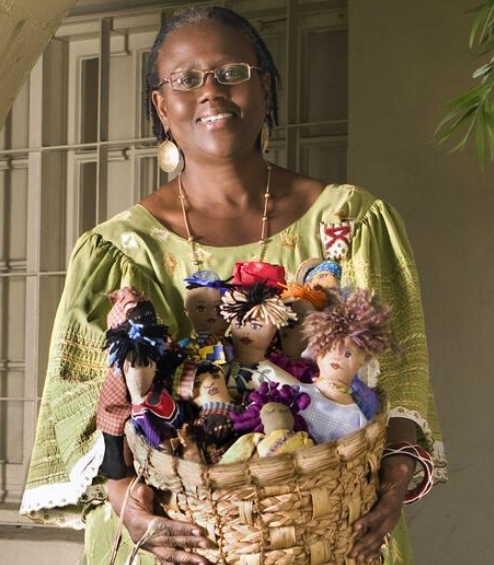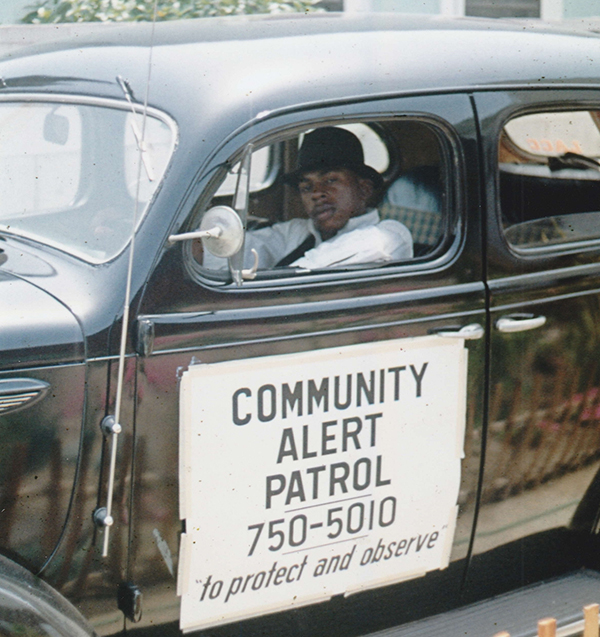By Shirley Hawkins
Contributing Writer
WILLOWBROOK — Dr. Cynthia Davis has used her occupation — she’s the director of the HIV Social and Sexual Networking Project at Charles R. Drew University of Medicine and Science — and her passion — she loves to make cloth dolls by hand — into a project that has been felt around the globe.
An exhibit of her hand-made dolls is currently on display in the lobby of the Cobb Medical Education Building at Drew University.
The roots for her Dolls of Hope Project date back to 1992 when Davis visited Africa to see firsthand the devastating extent of HIV and AIDS on the continent. The disease was steadily ravaging the adult population with millions dying and leaving thousands of orphaned children behind.
The children see saw in orphanages throughout Africa troubled Davis.
“The children had no life in their eyes,” she said. “They had no toys — they were playing with rocks and tree bark.”
To help alleviate the problem, Davis launched the Dolls of Hope Project on World AIDS Day Dec. 1 in 1998. The project involves volunteers making hand-made cloth dolls for HIV/AIDS orphans and/or children, youth and women impacted by HIV/AIDS or who are in need.
Since its inception, the Dolls of Hope Project has distributed more than 7,000 hand-made cloth dolls to women, youth and AIDS orphans around the world.
“The dolls bring hope to children who had no hope,” Davis said.
A lifelong doll lover, Davis said she buys cloth for the dolls from local craft stores.
“I paint all the faces on my dolls myself, and no dolls look alike,” she said.
No matter where she travels in the world, Davis said she is always touched to witness the joy and bright smiles that the hand-crafted dolls bring to children.
“The (orphaned) children love the dolls because they say, ‘This is something that belongs to me,’” she said.
Davis added that the Dolls of Hope project has blossomed into an international movement.
“I have conducted Dolls of Hope workshops around the world including in Durban, South Africa, Bangkok, Thailand, Havana, Cuba, Uganda and Fort Lauderdale, Florida.” she said. “These workshops have been used not only to make the dolls, but to educate women and youth about their risk for HIV infection and to break the silence surrounding the stigma.”
Davis serves on the board of directors of the AIDS Healthcare Foundationthat brings life-saving medications to hundreds of thousands of poor, medically underserved populations around the world and also to provide HIV testing services to millions of at-risk populations.
In 1991, Davis was the first to develop an HIV mobile testing program in Los Angeles County, which has provided free HIV screening services to more than 60,000 county residents.
Youth are often not aware of HIV and AIDS and sexually transmitted diseases, and Davis has traveled to local high schools in Los Angeles and Compton to educate teens about HIV education and prevention, addng that the rates of gonorrhea and chlamydia in Los Angeles County have been increasing fastest among Black and Latina women between 15 and 24.
Davis is often tapped to participate in AIDS doll making excursions around the world, and recently returned from Cuba after participating in a cultural exchange program.
“I worked with Afro Cuban doll makers to learn not only about the doll making process as an income generating program for the population, but how they are using doll making to address social justice issues and health equity issues in Cuba,” she said. “I was one of 23 doll makers invited by the University of Minnesota to participate in this cultural exchange and it was a trip of a lifetime.”
Upon returning from Cuba, Davis was saddened to hear about the recent death of her dear friend, lifelong HIV/AIDS activist Hydeia Broadbent.
“She was diagnosed with AIDS at 3 years old and doctors didn’t expect her to live very long, but she lived to the age of 39,” Davis said.
Born to a drug addicted mother, Broadbent was a frequent speaker at schools, churches and HIV/AIDS events, helping to dispel the stigma and myths surrounding HIV and AIDS.
“It was an honor and a privilege to work with her over the years and to see her bringing attention to the impact of HIV and AIDS in the Black and the global community,” Davis said.
The AIDS activist said that she will never stop making her dolls.
“Making dolls is a very healing experience,” she said. “Making dolls and breaking the stigma of people living with HIV and AIDS is very therapeutic and a way to come together as a community to heal.”
The Dolls of Hope exhibit is located in the lobby of the Cobb Medical Education building at Charles Drew University of Medicine and Science until March 31.
Charles Drew University of Medicine and Science is located at 1731 E. 120th Street in Willowbrook.
The exhibit can be viewed between 8 a.m. and 5 p.m. Monday through Friday.
Shirley Hawkins is a freelance reporter for Wave Newspapers. She can be reached at metropressnews@gmail.com.











